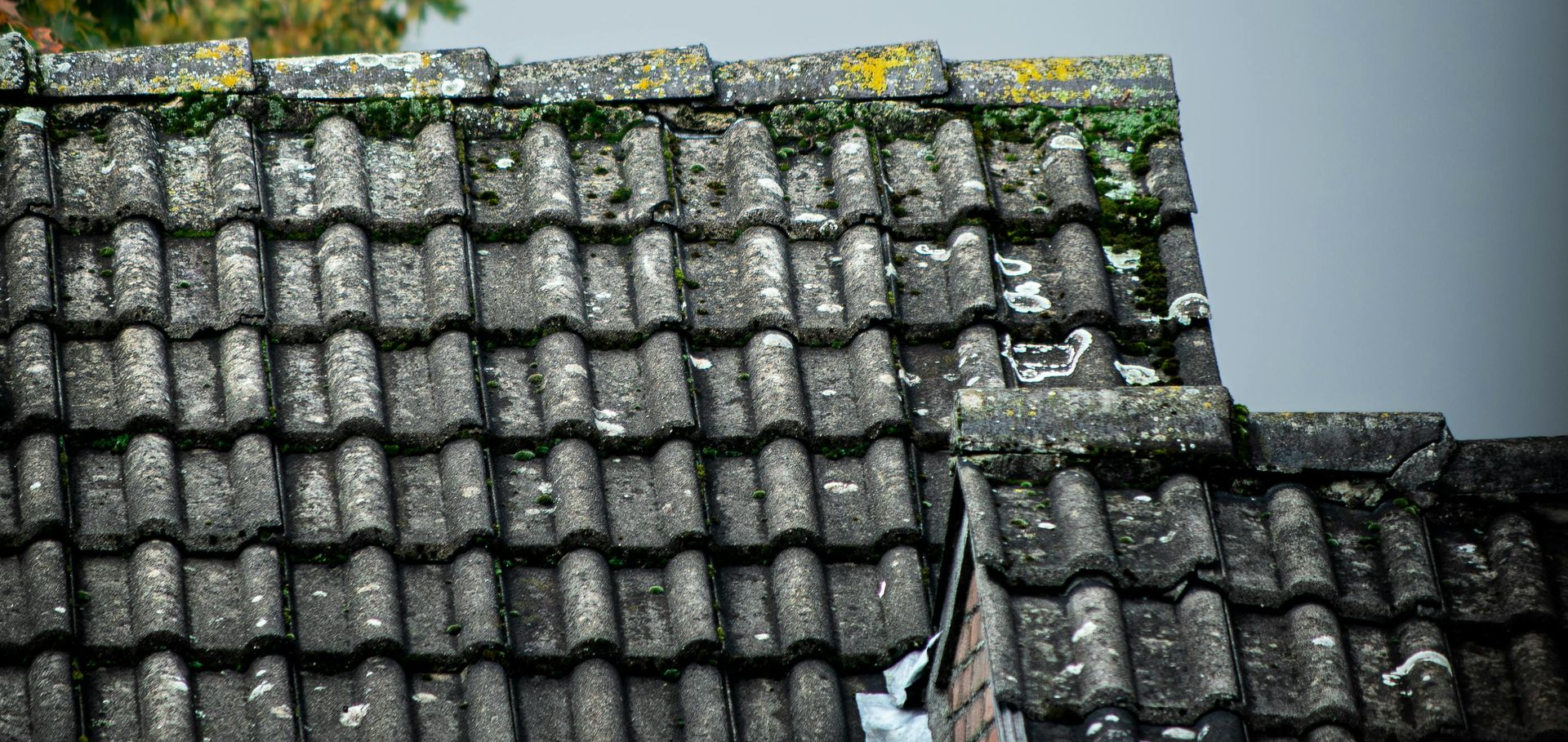When Should You Clean Your Gutters? The Ultimate UK Seasonal Guide
Understanding the perfect timing for gutter cleaning in the UK can mean the difference between protecting your property and facing thousands of pounds in water damage repairs. With Britain receiving an average of 1,150mm of rainfall annually, well above the global average, your gutters work harder here than almost anywhere else in the world. The unpredictable British climate, characterised by generous helpings of rain throughout the year, makes strategic gutter maintenance not just recommended but absolutely essential.
This comprehensive seasonal guide reveals the optimal timing for gutter cleaning across the UK, taking into account regional weather patterns, tree cycles, and the unique challenges posed by our maritime climate. Whether you're dealing with the heavy leaf fall of a Yorkshire autumn or the persistent drizzle of a Welsh winter, this guide provides the knowledge you need to keep your gutters functioning perfectly year-round.
Understanding the UK Climate's Impact on Gutter Maintenance
The UK's temperate oceanic climate creates unique challenges for gutter maintenance that homeowners in drier climates simply don't face. Our weather patterns directly influence when and how often gutters need cleaning, making a one-size-fits-all approach unsuitable for British conditions.
Seasonal rainfall distribution varies significantly across the UK, with western regions typically receiving more precipitation than eastern areas. Scotland's west coast might see over 2,500mm annually, whilst parts of East Anglia receive less than 600mm. This variation means your cleaning schedule should reflect your local conditions rather than following generic advice designed for different climates.
Temperature fluctuations throughout the year affect both the type of debris that accumulates in gutters and the ease with which it can be removed. Winter's freeze-thaw cycles can turn wet leaves and organic matter into concrete-like masses that become increasingly difficult to clear as temperatures drop. Understanding these patterns helps you time cleaning sessions for maximum effectiveness.
Wind patterns across the UK distribute debris unevenly, with prevailing westerly winds often concentrating leaves and organic matter on specific sides of properties. Coastal areas face additional challenges from salt-laden air that can accelerate corrosion, whilst inland regions deal more with airborne pollen and dust that can create stubborn blockages when mixed with moisture.
Daylight hours also play a crucial role in maintenance planning. Winter's shortened days limit safe working hours for gutter cleaning, whilst summer's extended daylight provides ample opportunity for thorough maintenance. This seasonal variation in available working time influences the optimal scheduling of cleaning activities throughout the year.
Spring: Post-Winter Recovery and Preparation (March-May)
Spring represents one of the two critical gutter cleaning periods in the UK calendar, offering the perfect opportunity to assess winter damage and prepare your drainage system for the challenges ahead. The combination of milder temperatures, longer daylight hours, and emerging vegetation creates an ideal window for comprehensive gutter maintenance.
Early spring cleaning (March-April) addresses the accumulated debris of winter whilst temperatures remain cool enough to prevent rapid decomposition of organic matter. This timing proves particularly important following harsh winters where ice and snow may have caused structural issues that require immediate attention. March cleaning also removes the residue of winter storms before spring growth begins in earnest.
The transition from winter to spring often reveals problems that weren't apparent during colder months. Damaged brackets, cracked joints, and misaligned sections become evident as ice melts and normal water flow resumes. Early detection of these issues prevents minor problems from developing into major repairs during the wetter months ahead.
Mid-spring maintenance (April-May) coincides with the period when tree buds and early blossoms begin falling. These organic materials, whilst smaller than autumn leaves, can create surprisingly effective blockages when combined with other debris. The sticky nature of tree sap and pollen makes spring debris particularly troublesome if allowed to accumulate.
April's famous showers provide an excellent test of your gutter system's functionality. Heavy spring rainfall quickly reveals any remaining blockages or structural issues that need addressing before summer storms arrive. This natural stress-test allows you to identify and resolve problems whilst conditions remain relatively manageable.
Late spring preparation (May) represents the final opportunity to ensure gutters are completely clear before summer's growth season begins. Plants and moss that establish themselves in gutters during May become increasingly difficult to remove as temperatures rise and growth accelerates. A thorough May cleaning essentially resets your gutters for the months ahead.
The longer days of late spring also provide ideal conditions for comprehensive maintenance work. With daylight extending well into the evening, you can tackle more extensive cleaning projects without rushing to complete work before darkness falls. This extended working time proves particularly valuable for properties with extensive or complex gutter systems.
Spring cleaning should include inspection for seedlings and early plant growth that may have established itself in organic debris. These small plants can quickly develop substantial root systems that make removal increasingly difficult. Early intervention prevents minor vegetation problems from becoming major clearance projects later in the year.
Summer: Monitoring and Maintenance (June-August)
Summer represents a period of relative stability for UK gutter systems, but this apparent calm can be deceptive. Whilst debris accumulation typically slows during the warmer months, several unique challenges require attention to maintain optimal gutter performance throughout the season.
Early summer assessment (June) focuses on the aftermath of spring growth and the preparation for summer storms. The combination of pollen, small leaves, and organic debris that accumulates during spring often creates surprisingly stubborn blockages when exposed to summer heat and occasional rainfall. This mixture can form clay-like deposits that resist simple water flushing.
June also marks the beginning of peak growing season for moss and algae in gutter systems. These organisms thrive in the warm, moist conditions created by partially blocked gutters and can quickly establish extensive colonies that impede water flow. Early summer intervention prevents minor growth from developing into major infestations.
Mid-summer monitoring (July) becomes particularly important in regions prone to sudden thunderstorms. Summer storms can be particularly intense, depositing large volumes of water in short periods that quickly reveal any marginal blockages in your gutter system. The dramatic contrast between summer drought and intense rainfall means gutters must be functioning perfectly to handle these extreme variations.
The extended daylight hours of summer provide excellent conditions for detailed gutter inspection. With sunlight lasting well into the evening, you can conduct thorough visual assessments that might be impossible during winter months. This enhanced visibility often reveals problems that remain hidden during shorter days.
Late summer preparation (August) begins the transition towards autumn maintenance schedules. Early leaf fall from stressed trees, combined with the debris from summer storms, can create the foundation for more serious autumn blockages. August cleaning removes this base layer of debris before the major leaf fall begins.
Summer's warm, dry conditions also provide ideal circumstances for any repair work identified during spring cleaning. Sealants cure more effectively in warm weather, whilst dry conditions allow proper assessment of joint integrity and bracket security. Summer represents the optimal window for structural repairs that ensure your gutter system is robust enough to handle autumn and winter challenges.
The period also allows for installation of preventive measures such as gutter guards or leaf catchers. With stable weather and extended working hours, summer provides ideal conditions for these enhancement projects that can significantly reduce maintenance requirements in subsequent seasons.
Autumn: The Critical Season (September-November)
Autumn represents the most crucial period in the UK gutter cleaning calendar, demanding careful timing and often multiple interventions to maintain effective drainage throughout the season. The combination of massive leaf fall, increasing rainfall, and dropping temperatures creates a perfect storm of challenges that can overwhelm even well-maintained gutter systems.
Early autumn intervention (September) addresses the first wave of leaf fall whilst weather conditions remain favourable for maintenance work. Many homeowners make the mistake of waiting for all leaves to fall, but this approach often proves counterproductive. By the time complete leaf fall occurs, weather conditions may have deteriorated to the point where safe, effective cleaning becomes difficult or impossible.
September cleaning captures approximately 30-40% of the total annual leaf fall, removing the initial accumulation before it becomes compacted by rainfall and subsequent debris. This early intervention prevents the formation of solid mats of organic matter that become increasingly difficult to remove as they decompose and bind together.
Peak autumn maintenance (October) typically coincides with the heaviest leaf fall across most of the UK. The timing varies by region, with northern areas often experiencing peak fall earlier than southern regions. Understanding your local tree cycles allows you to time cleaning for maximum effectiveness.
October presents the classic timing dilemma that challenges many homeowners: clean too early and gutters quickly refill with falling leaves; wait too long and deteriorating weather conditions make cleaning dangerous or impossible. The optimal approach involves monitoring local leaf fall patterns and acting when approximately 70% of leaves have fallen from nearby trees.
The month also brings increasingly frequent rainfall that quickly reveals any inadequacies in your gutter system. Heavy autumn showers can transform minor blockages into complete system failures, with overflow water causing immediate damage to property exteriors and foundations. October cleaning addresses these vulnerabilities before they can cause significant problems.
Late autumn finalisation (November) represents the last practical opportunity to ensure gutters are completely clear before winter conditions arrive. By November, most deciduous trees have completed their leaf drop, allowing for comprehensive clearing without the immediate risk of refilling.
November cleaning proves particularly critical for properties surrounded by oak and beech trees, which often retain leaves well into winter through a process called marcescence. These late-dropping leaves can create significant blockages if not addressed before freezing temperatures arrive.
The month's shorter days and increasingly unpredictable weather make timing crucial. Professional gutter cleaners often experience peak demand during November as homeowners rush to complete maintenance before winter, making early booking essential for those requiring professional services.
Temperature considerations become increasingly important as November progresses. Frozen debris becomes extremely difficult to remove without damaging gutters, whilst icy conditions make safe access challenging. The window between complete leaf fall and the onset of freezing conditions often spans just a few weeks, making prompt action essential.
Winter: Protection and Prevention (December-February)
Winter represents the most challenging period for UK gutter maintenance, with shortened daylight hours, harsh weather conditions, and the constant threat of freezing making routine cleaning difficult or dangerous. However, strategic winter maintenance and monitoring can prevent minor issues from developing into major problems that require expensive spring repairs.
Early winter preparation (December) focuses on ensuring gutter systems are completely clear before the onset of serious winter weather. Any debris remaining in gutters during freezing conditions can create ice dams that cause structural damage to both gutters and roofing systems. The expansion of freezing water can crack gutter joints, pull brackets from walls, and create leaks that persist long after temperatures moderate.
December cleaning should be completed before sustained freezing temperatures arrive, typically by mid-month in most UK regions. This timing allows for thorough debris removal whilst conditions remain workable, providing maximum protection throughout the winter period.
Mid-winter monitoring (January) requires careful observation rather than active maintenance. Ice and snow make physical gutter cleaning dangerous and potentially damaging, but visual inspection from ground level can identify developing problems that require attention once conditions improve.
January monitoring focuses on ice dam formation, unusual icicle patterns, and signs of water backup that suggest underlying blockages. Heavy snow loads can also stress gutter systems beyond their design limits, making structural assessment important during and after significant snowfall events.
The month's harsh conditions often reveal weaknesses in gutter systems that weren't apparent during milder weather. Loose brackets, inadequate support, and marginal joints often fail during winter stress, providing valuable information for spring repair planning.
Late winter assessment (February) marks the beginning of preparation for spring maintenance activities. As daylight hours begin lengthening and temperatures start moderating, February provides the first realistic opportunity for detailed gutter system assessment since early winter.
February inspection focuses on winter damage documentation and spring cleaning preparation. Ice damage, structural problems, and debris accumulation during winter storms all require assessment before active maintenance can begin. This preliminary evaluation helps prioritise spring repair work and identifies any urgent issues requiring immediate attention.
The month also provides an opportunity to clear any accessible debris that has accumulated during winter storms, provided conditions allow safe access. Light cleaning during mild February days can prevent minor blockages from developing into major problems as spring rainfall increases.
Regional Variations Across the UK
The diversity of climate and vegetation across the UK means that gutter cleaning schedules must be adapted to local conditions rather than following national guidelines. Regional differences in rainfall patterns, temperature cycles, and vegetation types create unique maintenance requirements that significantly impact optimal cleaning timing.
Scotland's Highland regions experience earlier and more severe winters, compressing the practical maintenance window into a shorter period. The combination of early snowfall and extended freezing periods means autumn cleaning must be completed by mid-October in many areas, whilst spring maintenance may not be feasible until April or even May in exposed locations.
The prevalence of coniferous forests in Scottish regions creates year-round needle fall that requires more frequent cleaning than deciduous leaf cycles would suggest. Pine needles and cone debris accumulate steadily throughout the year, often requiring quarterly rather than biannual maintenance schedules.
Northern England's industrial regions face unique challenges from airborne pollution that combines with natural debris to create particularly stubborn gutter
blockages. Cities like Manchester and Leeds experience pollution-enhanced debris that forms concrete-like deposits when wet, requiring more aggressive cleaning techniques and potentially more frequent maintenance.
The region's unpredictable weather patterns, with rapid transitions between dry and wet conditions, can quickly turn minor blockages into complete system failures. Northern homeowners often benefit from monthly visual inspections rather than relying solely on seasonal cleaning schedules.
Wales' mountainous terrain creates significant microclimates that can vary dramatically within short distances. Coastal areas remain relatively mild throughout winter, extending the practical cleaning season, whilst upland regions may experience conditions similar to the Scottish Highlands.
The region's exceptional rainfall levels—with some areas receiving over 2,500mm annually—place extraordinary demands on gutter systems. Welsh properties often require additional drainage capacity and more frequent maintenance than UK national averages would suggest.
Southern England's diverse conditions range from the chalky downlands of the South Downs to the clay soils of the Thames Valley, each creating different challenges for gutter maintenance. The region's relatively mild climate extends the maintenance season but also supports more vigorous plant growth that can complicate gutter cleaning.
London's urban heat island effect creates unique conditions that accelerate plant growth in gutters whilst simultaneously increasing the rate of organic matter decomposition. Urban properties often require more frequent cleaning than suburban equivalents, despite having fewer trees in their immediate vicinity.
East Anglia's drier climate reduces some pressure on gutter systems but creates different challenges. The region's lower rainfall means that when significant precipitation does occur, gutter systems must be functioning perfectly to handle the concentrated water flow. Infrequent but intense rainfall events can overwhelm marginally blocked systems that might function adequately in wetter regions.
The area's agricultural landscape contributes wind-borne dust and crop residues that can accumulate in gutter systems, creating blockages that differ significantly from the leaf and organic matter problems common elsewhere in the UK.
Tree Types and Their Cleaning Implications
The species of trees surrounding your property fundamentally influences your gutter cleaning schedule, with different trees presenting unique challenges that require adapted maintenance approaches. Understanding these variations allows you to anticipate problems and schedule cleaning activities for maximum effectiveness.
Oak trees present some of the most challenging conditions for UK gutter maintenance. These majestic trees produce enormous volumes of leaves during autumn, but their marcescent nature means many varieties retain dead leaves throughout winter. This extended dropping period can require multiple cleaning sessions from October through March, as leaves continue falling long after other deciduous species have completed their cycle.
Oak leaves are also notably large and robust, creating effective dams when they accumulate in gutters. The leaves' tough structure means they decompose slowly, maintaining their blocking potential for extended periods. Properties with mature oaks nearby often require the most intensive maintenance schedules of any UK tree species.
Beech trees share the marcescent characteristics of oaks but present additional challenges through their prolific production of beechnuts and husks. These hard organic materials can create stubborn blockages that resist standard cleaning techniques, whilst the tree's tendency to retain leaves through winter means cleaning schedules must extend well beyond typical autumn periods.
The smooth-barked nature of beech trees also means they shed their bark in flakes that can accumulate in gutters, creating an additional debris stream that many homeowners overlook when planning maintenance schedules.
Pine and coniferous species create year-round maintenance requirements that differ dramatically from deciduous tree cycles. Scots pine, Douglas fir, and other conifers shed needles continuously, with peak dropping periods varying by species and local conditions. The needles' small size and tendency to form dense mats make them particularly effective at blocking gutters.
Pine cones present additional challenges, as their woody structure makes them difficult to remove once wedged in downspouts or gutter joints. Properties with extensive coniferous coverage often require quarterly cleaning to maintain adequate drainage capacity throughout the year.
Sycamore and maple species produce distinctive "helicopter" seeds that can travel considerable distances before settling in gutters. These seeds often accumulate in late spring and early summer, creating blockages during periods when many homeowners aren't expecting gutter problems. The seeds' aerodynamic design allows them to penetrate existing debris and establish deep blockages that resist surface cleaning.
The trees' large leaves during autumn create substantial debris volumes, whilst their early budding in spring contributes to the March-April accumulation that makes early spring cleaning so important.
Willow trees present unique challenges through their fine, narrow leaves that can weave together into virtually impermeable mats once wet. These organic carpets can completely block water flow whilst appearing relatively minor from ground-level observation. The species' preference for moist conditions also means they often grow rapidly in partially blocked gutters, creating self-reinforcing blockage systems.
Lime trees contribute sticky sap and aphid honeydew that acts as a binding agent for other organic debris. This biological adhesive can transform minor accumulations of leaves and dust into solid masses that require mechanical removal rather than simple flushing. The trees' heart-shaped leaves also interlock effectively, creating structured blockages that resist water pressure.
Warning Signs That Demand Immediate Action
Recognising the early warning signs of gutter problems allows you to address issues before they develop into expensive damage. Understanding these indicators helps you move beyond rigid seasonal schedules to responsive maintenance that protects your property more effectively.
Water overflow during rainfall represents the most obvious sign of gutter malfunction, but the location and character of overflow provides important diagnostic information. Water spilling uniformly along the gutter line suggests complete blockage, whilst localised overflow typically indicates specific blockage points or structural problems.
The timing of overflow relative to rainfall intensity also provides crucial information. Gutters that overflow only during heavy downpours may have marginal capacity that requires attention before the next major storm. Systems that overflow during light rainfall indicate serious blockages requiring immediate intervention.
Sagging gutter sections suggest either structural failure or excessive weight from accumulated debris and standing water. The location of sagging provides important clues about underlying problems—uniform sagging along entire sections typically indicates inadequate support, whilst localised sagging suggests concentrated loading from blockages or structural damage.
Early detection of sagging allows for repair before complete failure occurs. Advanced sagging can pull gutters away from buildings, causing damage to fascia boards, exterior walls, and roofing systems that extends far beyond simple gutter replacement costs.
Plant growth in gutters indicates long-term neglect that has allowed organic matter to accumulate and decompose into growing medium. Small seedlings suggest recent establishment that can be addressed through thorough cleaning, whilst mature plants indicate extensive organic accumulation requiring aggressive removal techniques.
The species of plants growing in gutters provides information about the type of debris present and the duration of neglect. Grass and weeds suggest soil-like conditions from extensive decomposition, whilst tree seedlings indicate specific organic matter from nearby parent trees.
Staining on exterior walls below gutters suggests chronic overflow problems that have persisted through multiple weather cycles. The pattern and extent of staining indicates both the duration of problems and the volume of misdirected water causing damage.
Fresh staining appears as clean water marks on building surfaces, whilst older problems create discoloured streaks and may promote biological growth such as algae or moss on building exteriors. Extensive staining often indicates problems that have persisted long enough to cause structural damage to building materials.
Ice dam formation during winter suggests inadequate drainage that allows water to accumulate and freeze in gutters. The size and location of ice formations provides diagnostic information about the underlying blockages causing water retention.
Large icicles hanging from gutters indicate substantial water backup, whilst ice formation along gutter edges suggests marginal drainage capacity. Properties that repeatedly develop ice dams during moderate freezing conditions likely have blockages that require attention before the next winter season.
Pest activity around gutters often indicates organic matter accumulation that provides food and nesting opportunities for insects, birds, and small mammals. Increased wasp activity around gutters during summer suggests organic debris that supports insect populations, whilst bird nesting activity indicates accumulated materials suitable for nest construction.
The presence of mosquitoes around gutters suggests standing water from inadequate drainage, creating breeding opportunities for these disease vectors. Properties with persistent mosquito problems often have subtle drainage issues that aren't apparent through visual inspection alone.
Professional vs DIY: Making the Right Choice
The decision between professional gutter cleaning services and DIY maintenance involves multiple factors beyond simple cost comparison. Understanding these considerations helps you make informed choices that balance safety, effectiveness, and economy based on your specific circumstances.
Safety considerations represent the most important factor in the professional vs DIY decision. UK accident statistics show that ladder-related injuries send thousands of homeowners to hospital annually, with gutter cleaning representing one of the highest-risk common maintenance activities. The HSE reports that falls from height remain the leading cause of fatal injuries in domestic settings.
Professional cleaners possess proper safety equipment, training, and insurance coverage that DIY enthusiasts typically lack. Their experience with safe ladder positioning, proper fall protection, and hazard recognition significantly reduces accident risk compared to occasional homeowner maintenance.
Equipment and effectiveness factors have evolved significantly with advances in professional gutter cleaning technology. Modern professional services often use high-reach vacuum systems, inspection cameras, and water-fed poles that achieve superior results compared to traditional ladder-based cleaning.
These sophisticated systems allow professionals to clean gutters thoroughly whilst working from ground level, eliminating height-related risks whilst often achieving better results than homeowners using basic tools. The investment in professional-grade equipment is typically justified only for businesses serving multiple properties, making professional services more cost-effective for individual homeowners.
Time and convenience considerations vary significantly based on property characteristics and personal circumstances. Professional services complete typical residential gutter cleaning in 2-4 hours, including setup and cleanup time. DIY cleaning often requires a full day when including equipment preparation, safety setup, cleaning, and proper debris disposal.
The convenience advantage of professional services extends beyond time savings to include scheduling flexibility, weather contingency planning, and elimination of the physical demands associated with extended ladder work.
Quality and thoroughness variables depend heavily on the specific professionals and DIY approaches being compared. Experienced professional cleaners typically achieve more thorough results due to better equipment, proven techniques, and systematic approaches developed through extensive practice.
However, property owners often have advantages in terms of familiarity with their specific gutter systems, willingness to spend extra time on problem areas, and direct investment in quality results. The most effective DIY cleaning often rivals professional results when homeowners invest in quality equipment and proper training.
Cost analysis requires consideration of both direct expenses and hidden costs associated with each approach. Professional gutter cleaning typically costs £100-£300 per session, depending on property size and complexity. Annual costs for twice-yearly professional cleaning range from £200-£600 for most properties.
DIY costs include initial equipment investment (£50-£500 depending on sophistication), ongoing maintenance supplies, and potential medical or property damage costs from accidents. When spread over multiple years, DIY equipment costs often prove economical, but the risk of expensive accidents must be factored into any realistic cost analysis.
Insurance implications can influence the professional vs DIY decision for both liability and property coverage reasons. Some home insurance policies specify professional maintenance requirements for certain building systems, whilst others offer premium reductions for professionally maintained properties.
DIY maintenance may void some warranty provisions and could complicate insurance claims if improper maintenance contributes to property damage. Professional services typically carry comprehensive insurance coverage that protects homeowners from liability and ensures proper remediation if accidents occur during service provision.
Seasonal Maintenance Calendar
Creating a structured maintenance calendar ensures consistent gutter care whilst adapting to the natural rhythms of the UK climate. This calendar provides a framework that can be customised for your specific property whilst maintaining the essential timing that protects your investment.
January: Assessment and Planning Winter's harsh conditions typically prevent active cleaning, but the month provides excellent opportunities for planning and problem identification. Conduct visual inspections from ground level during clear days, noting ice dam formation, unusual icicle patterns, and signs of structural stress from winter weather.
Use January to schedule professional services for the year ahead, particularly if you require autumn cleaning during peak demand periods. Early booking often provides better scheduling flexibility and potentially more competitive pricing.
Document any winter damage for spring repair planning. Photograph problem areas and make notes about required materials or professional assistance needed when weather permits active maintenance.
February: Final Winter Assessment As days begin lengthening, February offers the first opportunities for detailed gutter system evaluation since early winter. Mild days provide chances to clear accessible debris that has accumulated during winter storms, provided conditions allow safe access.
Begin planning spring cleaning schedules, taking into account local weather patterns and the specific tree species around your property. Early spring cleaning timing varies significantly across the UK, with southern regions often allowing March work whilst northern areas may require waiting until April.
March: Spring Activation For most UK regions, March represents the beginning of practical gutter maintenance season. Early spring cleaning removes winter accumulation before new growth begins, providing a clean foundation for the growing season ahead.
Focus on winter damage assessment and immediate repair of any problems that could worsen during spring rainfall. Address loose brackets, damaged joints, and misaligned sections before they cause more extensive damage.
April: Peak Spring Maintenance April's combination of moderate temperatures and increasing daylight hours provides ideal conditions for comprehensive gutter system maintenance. The month's famous showers provide natural testing of your gutter system's capacity and reveal any remaining blockages.
Complete any structural repairs identified during March assessment work. Spring's moderate conditions allow proper curing of sealants and adhesives whilst dry periods permit thorough assessment of repair effectiveness.
May: Pre-Summer Preparation May cleaning removes the debris from spring growth and late tree flowering, providing a clean start for summer monitoring. Focus on complete system clearing and establishment of summer inspection routines.
Install any preventive measures such as gutter guards or leaf catchers during May's favorable conditions. Summer's stable weather provides ideal installation conditions whilst spring cleaning ensures systems are clear before protection is installed.
June-August: Summer Monitoring Summer's extended daylight hours facilitate regular visual inspections that identify developing problems before they cause system failures. Monthly inspections during stable weather help maintain awareness of your gutter system's condition.
Address any repair work identified during spring cleaning, taking advantage of summer's ideal working conditions for structural improvements and system enhancements.
September: Early Autumn Intervention Begin autumn cleaning campaigns as soon as leaf fall starts, typically removing 30-40% of annual accumulation before it becomes compacted. Early intervention prevents the formation of solid debris masses that become increasingly difficult to remove.
Monitor local weather forecasts for optimal cleaning windows that provide dry conditions for several days after cleaning. This allows proper assessment of cleaning effectiveness and identification of any missed blockages.
October: Peak Autumn Activity October typically requires the most intensive gutter maintenance of the year, often necessitating multiple cleaning sessions as leaf fall accelerates. Monitor tree cycles carefully and schedule cleaning when approximately 70% of leaves have fallen from nearby trees.
Focus on complete system clearing and structural assessment before winter conditions arrive. Address any problems identified during cleaning whilst weather conditions remain favorable for repair work.
November: Winter Preparation Complete all autumn cleaning activities by mid-November in most UK regions, ensuring gutters are completely clear before freezing conditions arrive. Late November cleaning represents the final opportunity for comprehensive maintenance before winter.
Conduct thorough inspection of system integrity, including bracket security, joint condition, and overall structural soundness. Winter's harsh conditions will test any weaknesses in your gutter system, making November the crucial month for ensuring everything is secure.
December: Final Clearing Complete any remaining autumn cleaning before sustained freezing weather arrives. Focus on final debris removal and system testing before winter protection becomes the priority.
Prepare monitoring plans for winter months, establishing routines for ground-level inspection during clear weather whilst avoiding dangerous access during harsh conditions.
Conclusion: Mastering UK Gutter Maintenance
Effective gutter maintenance in the UK requires understanding our unique climate challenges and adapting maintenance schedules accordingly. The combination of heavy rainfall, unpredictable weather, and diverse vegetation creates conditions that demand more intensive care than gutters in drier climates.
The key to success lies in recognising that gutter cleaning timing must be responsive rather than rigid. Whilst seasonal guidelines provide essential frameworks, successful maintenance requires adaptation to local conditions, weather patterns, and the specific challenges of your property.
The critical periods of spring and autumn demand your closest attention, with spring cleaning preparing your system for summer challenges whilst autumn maintenance protects against winter damage. However, year-round awareness and responsive maintenance prevent minor issues from developing into major problems.
Regional variations across the UK mean that Highland Scottish properties need different approaches than Sussex coastal homes. Understanding your local conditions—from rainfall patterns to vegetation cycles—allows you to develop maintenance schedules that work with natural patterns rather than against them.
Safety considerations should never be compromised for convenience or cost savings. The risks associated with ladder work and height access make professional services worthwhile for many homeowners, particularly those with complex or high-access gutter systems.
Investment in proper maintenance pays substantial dividends through prevented water damage, extended gutter system life, and maintained property values. When compared to the costs of structural repairs from water damage, regular gutter maintenance represents one of the most cost-effective investments in property protection.
The UK's challenging climate demands respect and preparation, but with proper timing and technique, your gutters can provide reliable protection throughout the year. Understanding when to clean your gutters isn't just about following a calendar—it's about developing a partnership with the natural cycles that affect your property and responding intelligently to the changing conditions each season brings.
By mastering the principles outlined in this guide and adapting them to your specific circumstances, you can ensure your gutters provide the reliable protection your property deserves, regardless of what the British weather decides to deliver.








